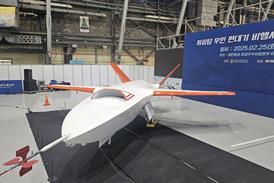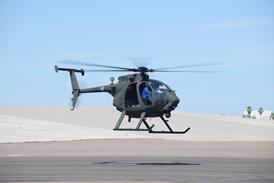Arie Egozi/TEL AVIV
THE SUCCESSFUL LAUNCH of the Amos 1 communications satellite on 16 May has proved to be the trigger for a major effort to turn Israel's space capability into a profitable business.
Israel had previously manufactured and launched three Offeq low-orbit satellites. The Amos 1 has provided the proof that this recently acquired communications capability may turn into a moneymaker for Israel Aircraft Industries (IAI) as it continues a desperate search for activities with real business potential.
Israel has entered the space industry late, but this may be an advantage. By holding back for so long, IAI has been able to identify a niche in building small, affordable communications satellites for countries which want to save the huge investment involved in building a cable television infrastructure. When the Amos was developed in 1991, it weighed less than 1t and its seven transponders could relay a maximum of 16 analogue TV channels. At the same weight, digitisation and compression techniques now enable the same satellite to relay up to 100 channels.
IAI hopes that such a satellite could become a "hot spot", offering end users a variety of channels. "We believe that this is the trend and that this is one of our main selling points," says Amos project manager Amitsur Rosenfeld.
Unlike other three-axis-stabilised satellites, the Amos communications satellite does not have a gyro as its main stabiliser. A combination of dual-cone Earth sensors, Sun sensors and a momentum wheel, have replaced the traditional gyro-based system. The new attitude-and-orbit control system (AOCS) has also eliminated the need for two separate stabilising systems, one for the geosynchronous transfer orbit (GTO) and one for the orbit itself.
EARTH POINTING
"The system works perfectly and we are about to license it as a patent," says Rosenfeld. The AOCS was developed to minimise the hardware required. Earth pointing, which enhances the communication period with ground stations around the world, has been a feature of the Amos from the beginning. The momentum wheel, which is usually idle during GTO, is used in the Amos in all phases. The horizon and Sun sensors are used during GTO and GEO. The dual-cone-scanning horizon sensor used in the Amos enables the AOCS to measure Earth reference in all GTO altitudes. The Sun sensor has a wide field of view, enabling Earth acquisition immediately after separation.
The Amos will be in direct competition with the Hughes 376 satellite, which is in the same weight-and-size category. "We understand that, if we want to keep the weight and size, we will have to increase the current 1,300W electrical power by 10-15%, and we are already working on that," says Rosenfeld.
TWO BEAMS
The only existing order is for an Amos twin, called the Magyarsat, which is being produced jointly by IAI and Antenna Hungaria, the Hungarian broadcasting authority. The company is looking for investment to enable the manufacture and launch of the central-European regional satellite by 2000. This communications satellite will be an improved version of the Amos and will have eight active transponders and greater electrical power.
The Amos reached its 4¡W GEO position on 2 June. The first transmission tests have been successful and Spacecom, the Israeli company responsible for marketing the satellite's services, hopes to sign the first contracts soon. The Amos has two beams, for Middle Eastern and European coverage.
While Spacecom is negotiating with potential customers in both areas, IAI wants more clients for its hardware. "We want to reach a point that will justify a communications-satellites production line. Only with such a line will we be able to reduce our price tag," says Rosenfeld, adding that the subcontractor model used for the production of the Amos 1 has proved its efficiency. Alcatel has manufactured the payload, and Daimler-Benz Aerospace has manufactured the propulsion, the power systems and the Ku-band antenna.
IAI is looking for partners, which will enable it to convert the successful Amos 1 launch, into a business and negotiations, have begun with North American and European satellite manufacturers. TRW, a partner in the Amos project at its outset, but which later withdrew, is interested again. US companies offer lower prices and are therefore preferred partners. The aim of IAI's commercial effort is to lower the price of an Amos-type communications satellite by 20%, to an average of $50 million.
Source: Flight International























